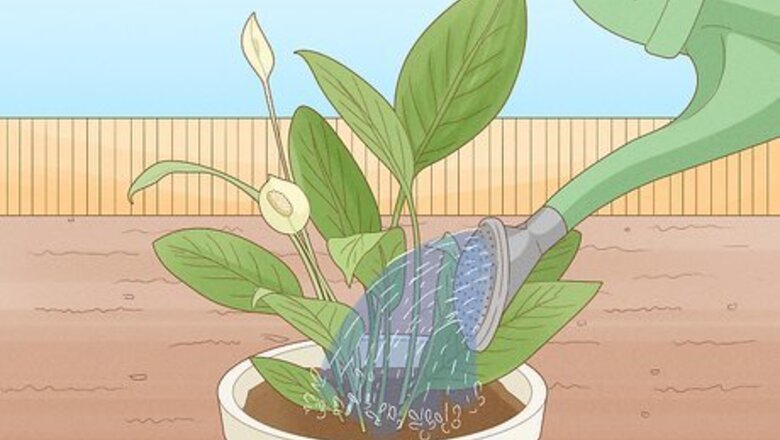
views
Providing Water Based on the Needs of the Plant
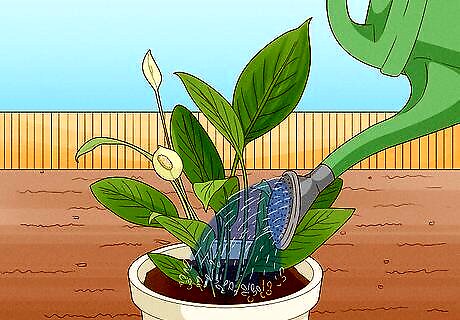
Provide water based on the native environment of the plant. Determine where the plant grows in the wild. Then, provide water based on that environment or ecosystem. For example, if a plant is native to a tropical region and you live in a semi-arid environment, you’ll need to provide a lot more water to it than to plants that are native to your region. If your plant receives diminishing light, you want to reduce the volume of water, and the plant is placed in an environment that receives increasing light, you're going to want to increase the volume of water. If you're in a dry location (like the desert Southwest), provide more water to fruit and vegetable bearing plants than you would native plants. In addition, give more water to ferns and non-native flowering plants. If you're in a tropical environment, you may not need to provide any extra water to fruit and vegetable bearing plants. If you're in a temperate environment, research the specific plant (especially if it is fruit or vegetable bearing) to verify it gets enough water.
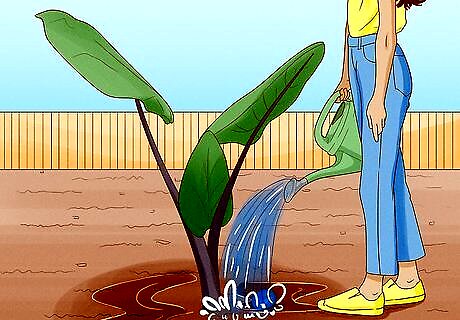
Soak the area around a plant after you put it in the ground. Plants you've just transferred into a new pot or piece of ground should have their roots and the dirt around them soaked immediately. For the first week, provide water every other day. After the first week, monitor the plant closely to make sure the soil stays damp. Provide extra water if the soil is dry. at all times. In summer, this can require watering once or even twice a day.”
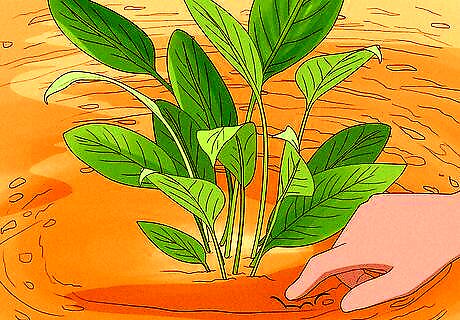
Test the moisture with your finger. Stick your finger into the soil around your plant up to the first knuckle. If the dirt feels cool, damp, or moist, it has enough water. If it feels dry, it may need more water.
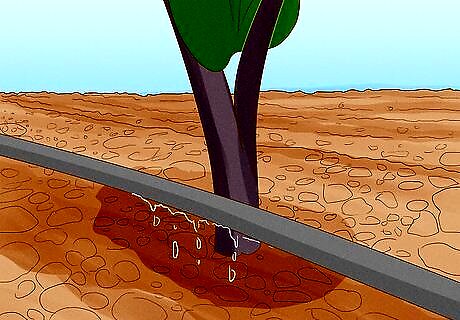
Use drip irrigation for plants with shallow roots. If you have a particular plant with shallow roots, you should set up a drip irrigation system. This system will slowly release water over a longer period of time. As a result, plants with shallow roots will have better access to water. Drip irrigation is especially useful for fruit and vegetable bearing plants in arid environments. Tomatoes, strawberries, and peppers will benefit immensely from drip irrigation.
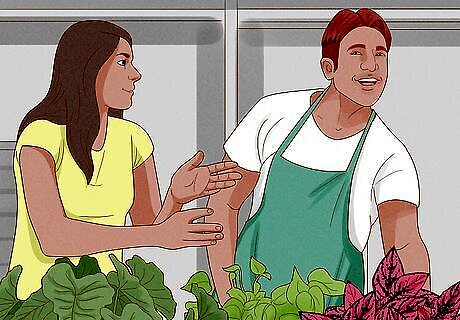
Ask an expert or someone at a nursery. If you have trouble providing enough water to a plant, you may want to contact someone who has experience dealing with it. Nursery employees, arborists, or plant biologists may be able to provide insight into how much water a specific plant needs.
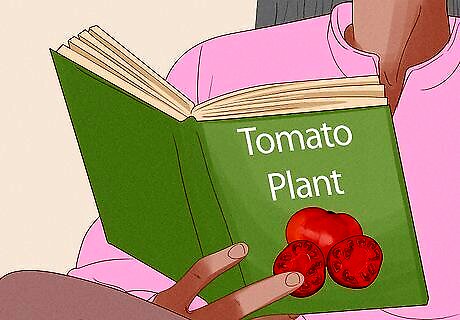
Read about the specific plant. Find a book or visit a website that has information about the specific plant you have a question about. For example, if you’re concerned about providing enough water to your tomato plants, find a book on tomato plants (and the variety you intend to grow) and see what the book suggests.
Avoiding Overwatering
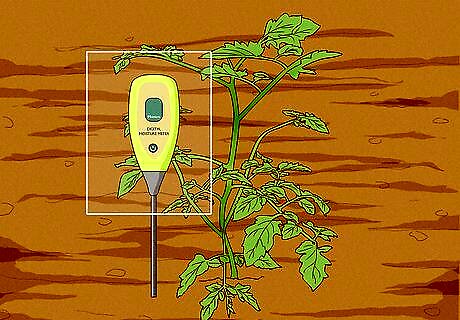
Use a soil moisture meter. Purchase a moisture meter and stick it into the soil near your plant. Leave the meter there and use it to monitor the soil. The meter will indicate whether the soil is dry, moist, or wet. Most plants will thrive if the soil is somewhat moist. Some meters have a 1 to 10 scale on them. The numbers 1 to 3 indicate dry, 4 to 7 indicate moist, and 8 to 10 indicate wet. Many plants tend to do well in the 4 to 5 range. Tomatoes do great in the 5 to 6 range. Once you’ve determined the optimum moisture range for your plant, use the meter to stay within it.
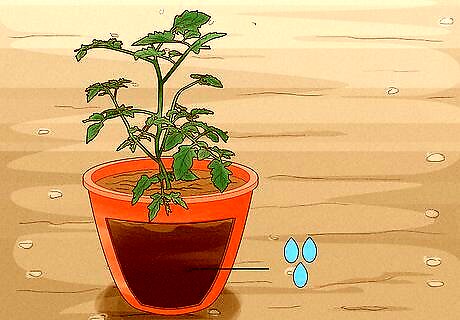
Look for standing water at the bottom of the container. If your plant is in some sort of container, check to see if there is a lot of water built up at the bottom. Pooled water is a tell-tale sign of overwatering. This is important, as too much water at the bottom of the container could cause root rot and other problems. If the pot has standing water, try putting it on top of a layer of stones. This will help it drain more efficiently.
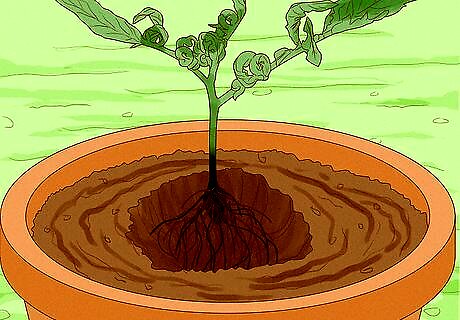
Check to see if roots at the bottom of the pot are rotting. Tip up the plant container or dig down to the bottom of the plant. If you notice that the roots are brown, grey, black, or slimy, they’re probably oversaturated with water. Instead, healthy roots should be white, solid, and crisp. Root rot is especially common in soils with pour drainage, such as soil that contains clay. Watch carefully for root rot if you're growing vegetables like lettuce, beans, beets, carrots, or onions.

Look for green, yellow, and brown leaves falling off the plant. If the soil is moist and you notice leaves falling off the plant, you may be overwatering it. In this instance, water less.
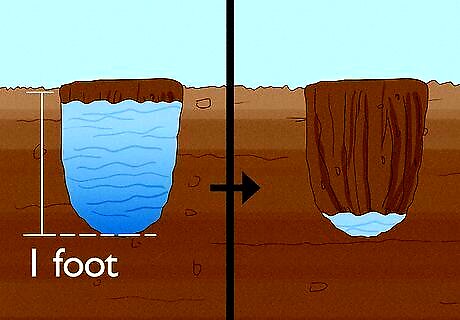
Test soil drainage. If you're working with plants in the ground, you'll need to do a little work to make sure your soil drains properly. To do this, dig a one foot deep hole in the ground. Fill the hole with water and allow it to drain. Then, fill the hole with water again and time how long it takes to drain. Your results will give you an idea of how well the soil drains: If the water drains in less than 4 minutes, most trees and plants should do okay there. If the soil drains in 5 to 15 minutes, most trees and plants will thrive. If the soil drains in 16 to 60 minutes, plants that need well-drained soil will need a lot less water than in other soil. If the soil takes hours to drain, only plants that grow in swamps or along bodies of water will live.
Avoiding Under Watering
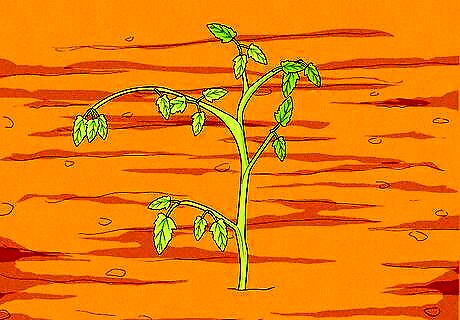
Watch to see if the plant is wilting. Wilting leaves and stems may be a sign that you are under watering your plants. Wilting leaves usually appear limp, weak, and seem to hang downward. Healthy leaves should appear crisp and firm. Ultimately, if your plant is wilting, you may need to give it more water. While it is more likely a sign of underwatering, wilting can also be a sign of overwatering. To properly determine whether wilting indicates underwatering or overwatering, consider other factors such as soil moisture. Usually, if the soil is dry and the plant is wilting, it needs more water. Wilting leaves are an important indication that fruit and vegetable bearing plants may produce low yields or experience other problems.
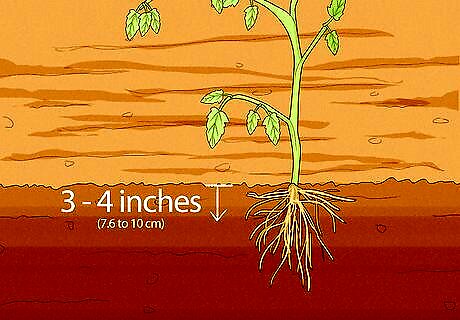
Check to see if the soil is damp 3 to 4 inches (7.6 to 10 cm) deep. As a rule, the soil for most plants should be somewhat moist about 3 to 4 inches deep (7.6 to 10 cm). This is important, as you need to make sure moisture reaches the roots of the plant. If the soil is not moist below 3 or 4 inches (7.6 to 10 cm), your plant may not be getting enough water. This is especially important for tomatoes, strawberries, and other fruits that depend on a lot of water.
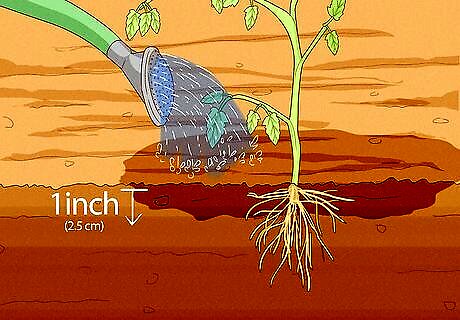
Provide 1 inch of water (2.5 cm) per week to vegetables. Whether you’re growing in some sort of container or in a garden bed, provide about 1 inch (2.5 cm) of water a week. If you’re in an arid climate, provide 2 inches (5 cm). In addition, if you’re in an extra hot environment, add about ½ (1.25 cm) for every 10 degrees above 60 degrees. It is okay if this water is provided artificially or through rain. Calculate the average temperature of your area by adding the daytime high and the nighttime low. Then, divide this by 2. For example, if the low is 60 and the high is 80, you’ll compute the average temperature as 70 degrees. If you’re in a temperate climate, you’d want to provide 1.5 inches (3.8 cm) of water per week.
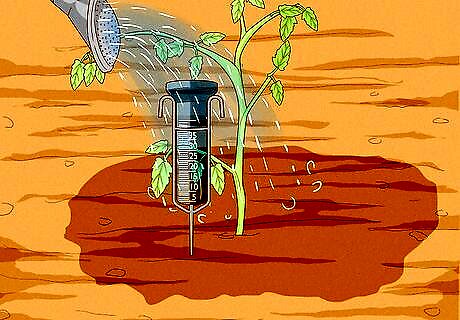
Measure the water your plants get. Purchase a rain gauge at your local hardware store. Then, place the rain gauge in your garden. Pay attention to how much water collects in the gauge after it has rained or you have watered your plants. If the amount of water the area around your plant gets is less than the recommended amount for the plant and climate, provide more water by installing sprinklers or making your own drip irrigator.

















Comments
0 comment